John Hurrell – 18 April, 2013
Visually Dwyer's contribution is very striking, particularly because of its highly reflective surfaces and the subtle colours of the different sections of transparent plastic. They spectrally (and wittily) transform reflected items close by, as well as a fragmented vertical image of the standing observing spectator. The latter is a sort of mirrored challenge or confrontation to the visitor - in terms of belief.
Auckland
Mikala Dwyer, Daniel Malone, Dane Mitchell, Peter Robinson
Light Sweet Crude
12 April - 11 May 2012
This is one of those mystical shows that in the words of exAUT lecturer Jan Bryant (whose text introduces the gallery blurb), rejects our ‘awareness of our bodies’ passage from one work to the next… the object’s materiality, the singular force of the artist’s thinking’ and invites us to leap into a state ‘far less concrete, more intuitive, non-empirical… more essential, more primary.’ And although about half these works imply their creator’s belief in a paranormal or spirit world, such views are not crucial for enjoying this exhibition. Or - as in my case - for writing about it.
In the first room we see Mikala Dwyer‘s Methylated Spiritual, a large wall ‘necklace’ hung as a relief or assemblage, an unravelled bracket with suspended reflective Perspex panels, and voodoo amulets that as votive ceramics contain desired items such as rolled up money. There is also a hanging bottle of whisky and a bottle of meths. The voodoo charms are linked to spells and prayers to various deities, while the diagonally aligned plastic rectangles reference the High Modernism of artists like Mondrian or later Noland, implying - like the two drinkable ‘poisons’ - that voodoo religion and High Modernism are equivalent belief systems.
Visually this is a very striking object, particularly because of its highly reflective surfaces and the subtle colours of the different sections of transparent plastic. They spectrally (and wittily) transform reflected items close by, as well as a fragmented vertical image of the standing observing spectator. The latter is a sort of mirrored challenge or confrontation to the visitor - in terms of belief.
In the big room, on the big unwindowed wall, Peter Robinson‘s installation of leaning poles - each made up of threaded on black, grey and white felt bands, is even more disorienting. The shimmering optical bounce on your eyes is intense, and it increases the closer you get. On the floor are scattered felt discs behind and in front of the tips of the poles. These tiny thick circles muddle your perception of the planar intersection between the wall and the floor. From a distance the wall looks like a greyish mirror with some poles seeming to be reflections. As you approach the speckled carpet seems to be in the process of being sucked up the tubes, streaming toward the ceiling.
Robinson’s poles imply a sort of DNA coding with their three fabric tones and different diameters, and this order disintegrates when the sticks blend into the aleatoric buttons below. Such shifting connects with the two part Daniel Malone work which deals with emerging and disappearing selves. Malone focuses on himself as a hybrid (multiple) subject via a merging of Daniel Malone the performance artist, Malone the leading character in a Samuel Beckett novel, and Billy Apple, the much older artist whose identity Malone the performance artist used on a New Zealand passport to emigrate to Poland.
Malone’s sculpture here has its two components on opposite sides of the room. One is a book on a shelf, a photocopied pirated Polish version of Beckett’s Malone Dies. This he copied from a Polish edition in a Warsaw library. It has a hard black cover on which the title is embossed in gold and looks like a relique of some sort.
The other is a mirror in an irregular hexagonal black frame that references 17 - 18th century funerary portraits placed in Poland and Lithuania at the head of a coffin. Hidden behind the murky glass are three items you can only see at the right angle with the right light. One is his library card, displaying the name Billy Apple. Another is Malone’s application (declined) to take the book out of the country. The third is a document signed by ‘Apple’ asking for permission to photocopy it.
This mirror-covered cluster of selves connects with Dwyer’s dangling perspex mirrors in the first gallery, and of course with the book physically separated across the room. The book and the mirror function as a kind of loop about agency, the socially perceived self, death and regenerating art. A similar loop structure is also present in Dane Mitchell’s Electrostatic Light Trap where a black flat mat on the floor attracts energy by absorbing light from within the room. This it stores up; then - with barely perceptible little convulsions - it splurts out low squeaks of static discharge, like some strange robotic orgasm. Mitchell’s circularity is consistent with his earlier projects with gallery moisture - but this time notably funnier.
Not so amusing, and related to Dwyer, is another Mitchell work, a table of delicate glass pear shapes, large sagging hollow drops containing his breath. Mitchell worked with a glassblower to encase within these collapsing glass bags ghost stories he heard in Liverpool while there for the Biennale. These spoken narratives he mingled with his exhalations - apparently trapped there forever like unhappy wraiths.
With the underpinning concept discussed at the beginning of this review, one wonders how Robinson and Malone fit in with Mitchell and Dwyer. Not overtly connected with the paranormal their contributions seem more about plurality of selves, or perhaps notions of metempsychosis and transmigration of souls. They’re more philosophical, abstract and distant, instead of mystical or with personal belief.
As for the show’s title, to me it seems odd: Light Sweet Crude is a term normally applied to oil, and though restrained this elegant exhibition is not saccharine, clumsy or raw - though it has a smoothness. The four artists make an exciting mix and all are at the top of their game. It’s an extremely interesting presentation, with glass, plastic and reflection playing a consistently crucial role as metaphorical aids to help considerations of selfhood. Not one to miss.
John Hurrell
Recent Comments
Sarah Hopkinson
Owen, Hopkinson Cundy has moved to Level 1, 19 Putiki St, Arch Hill. We opened here in December last year. ...
Owen Pratt
Sorry about the trolling but I was grumpy at that. However I did think the installation at Letts was really ...
John Hurrell
Well Owen, I know that they were open this morning because a couple of friends of mine called in to ...
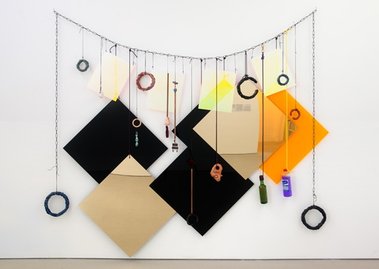

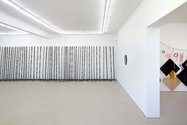



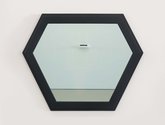
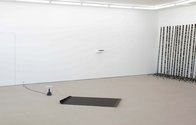
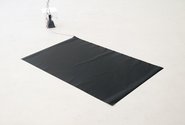


 Advertising in this column
Advertising in this column Two Rooms presents a program of residencies and projects
Two Rooms presents a program of residencies and projects



This Discussion has 4 comments.
Comment
Owen Pratt, 3:55 p.m. 19 April, 2013 #
On your recommendation, John, and because I like Mitchells' work and I wanted to rule out for certain that I wasn't in third form art class with this particular Micala Dwyer, I made the safari to Karangahape, only to find out that Hopkinson Cundy is Swahili for we may be shut without warning on a Friday.
Well bugger that. You must not miss the show at Michael Letts; it has better parking, better coffee, better pastries and from what I could see better art. (Michael.P. Et.al..).
John Hurrell, 1:40 a.m. 20 April, 2013 #
Well Owen, I know that they were open this morning because a couple of friends of mine called in to see the show. We've chatted.
Owen Pratt, 1:29 p.m. 20 April, 2013 #
Sorry about the trolling but I was grumpy at that. However I did think the installation at Letts was really interesting, formally solid and a good collaboration of colleagues.
Sarah Hopkinson, 2:27 p.m. 20 April, 2013 #
Owen,
Hopkinson Cundy has moved to Level 1, 19 Putiki St, Arch Hill. We opened here in December last year. Our open hours are Tuesday-Friday 10am-5pm and Saturday 11am-3pm. We were definitely open yesterday - sorry that you had trouble finding us.
Participate
Register to Participate.
Sign in
Sign in to an existing account.